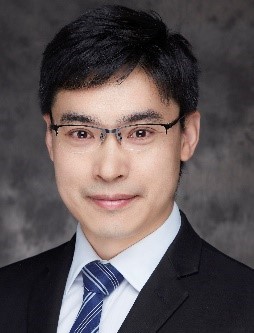
Research Professor
Institute of Applied Electronics
Research Interests: Millimeter-to-Terahertz Electronics, Terahertz Sources and applications
Office Phone: 86-10-6276 5863
Email: duchaohai[at]pku.edu.cn
Du, Chaohai is a research professor in the Institute of Applied Electronics, School of Eletronics. He obtained his B.S. degree from University of Electronic Science and Technology of China in 2005, and Ph.D. from Institute of Electronics, Chinese Academy of Sciences in 2010, respectively. His research interests include Millimeter-to-Terahertz Electronics, Terahertz Sources and applications.
Dr. Du has published more than 100 research papers (more than 70 papers in SCI journals), including 40 1st-or-orresponding-author SCI journal papers (22 in IEEE journals, 5 AIP POP, and 5 of other journal papers). A 1st-author Monograph (Chao-Hai Du, Pu-Kun Liu, Millimeter-Wave Gyrotron Traveling-Wave Tube Amplifiers, ISBN 978-3-642-54727-0) was published by Springer in 2014. 18 National Invention Patents were authorized. He also took charge of 8 projects (about RMB ¥5 Million Yuan in total) on developing advanced millimeter-to-terahertz devices. He was awarded the funding of National Natural Science Funds for Excellent Young Scholar in 2015. Du secured the Royal Society Newton Advanced Fellowship in 2018. Achievements are summarized as follows,
1. Device Schemes, Theoretical Model, and Mechanisms. New device schemes, namely, Cascaded Electron Cyclotron Maser and Pre-bunched Electron Cyclotron Maser, were proposed. The theoretical model of lossy-ceramic-loaded gyrotron traveling-wave amplifier was successfully established. The mode competition mechanism which is the long-lasting factor hindering gyrotron amplifier development is systematically revealed. These works laid theoretical foundations for future developing electron cyclotron devices which were the turn-on-key devices for high-power high-resolution remote millimeter-wave radar, controlled thermonuclear fusion reactor, terahertz wave enhanced nuclear magnetic resonance spectroscopy, and so on.
2. Core Components. The constant-general-momentum cathode emitter was proposed for developing terahertz axis-encircling electron gun, the emission current of which can be enhanced by one-order-of-magnitude higher than the state-of-the-art level. This provided important support for developing high-harmonic gyrotron devices. Several other components, including broadband mode generator, quasi-optical converter, multi-band terahertz window, were successfully developed to solve the bottle-neck problems of several projects.
3. Professional Simulation Codes. Two professional codes for computer simulation of large-electrical- dimension EM systems, namely GTWTC and GQOMC, were developed for fundamental scientific researches. The GTWTC is used for simulating electron beam-wave interaction system, and the GQOMC for studying millimeter-wave quasi-optical propagation system.
4. New Device. The first domestic W-band gyrotron backword-wave oscillator was developed. This continuous tuning oscillator generated peak power of 8 kW, tuning bandwidth about 2.5 GHz, and provided important support for developing gyrotron working in terahertz band.




